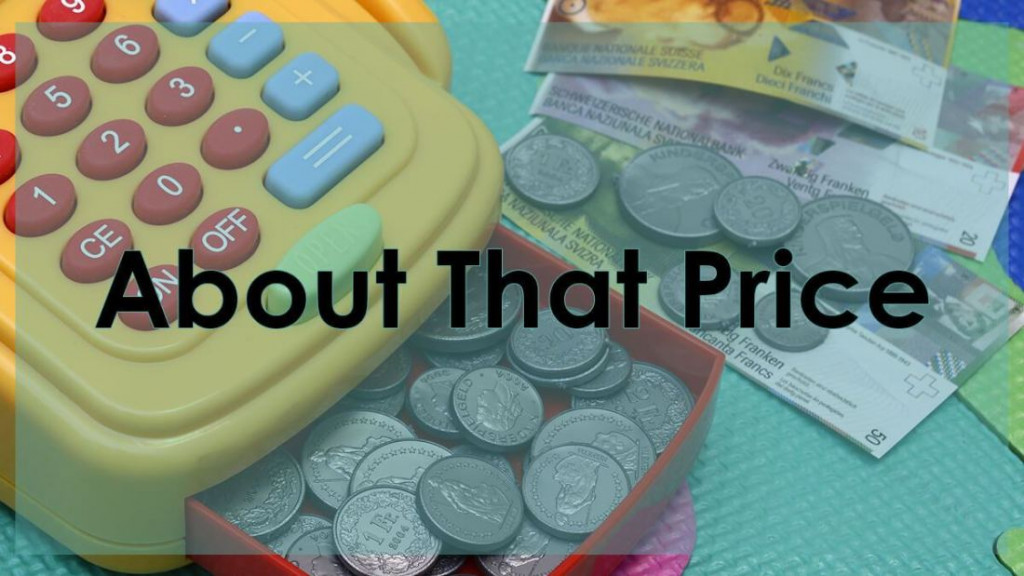
You like podcasts? Cuz that’s a podcast.
“The only thing people care about is the lowest price.”
This is the rejoinder I most often hear when a business doesn’t see any value in advertising (much less marketing).
This confounded me for many years until I realized advertising wasn’t the problem. The problem is the owner’s own sense of value. He has gotten to the stage of such crusted over cynicism he doesn’t even value his own business anymore.
Nobody wants to spend more money than they have to, but the only time customers will price-shop you is to break a tie. If the only difference is the price, the lower price will always win.
This is the point where the word “value” usually comes up. “Value” is a nebulous concept that lives only in the mind of the consumer. It’s also an equation:
PP-AP=V
The price I perceive in my brain (PP) minus the actual price (AP) equals the value (V). The further (V) is from (AP), the better value a purchase is.

My perceived price and your perceived price rarely ever match, but there are clues. Remember, low price is a tie-breaker. If you and your competitors share roughly the same price for the same product, it means the market’s perceived price has reached a level of equilibrium. Customers believe your product should cost about what it does.
All you have to do is to increase the perceived value. Easy for me to say, but this is where the game is played and won.
Imagine 3 different leaf cleaning companies:
Company A will clear the leaves from your yard for $100.
Company B will do it for $95.
Company C will do it for $110.
Not enough price difference there to make much of a difference. It appears people in your town will pay about $100 to clear the leaves.
Enter Company D.
Company D will clean your yard for $175. Today. And if the wind blows your neighbor’s leaves into your yard within 48 hours, Company D will do the job all over again for free.
The moment you start stacking on extras that mean something to the customer, you get to charge more. You’ve widened the value-gap. Not only is $175 a more than fair price for that service, it makes $100 seem outrageous because Company A “only” rakes leaves.
That’s right. You just made the lower priced company seem like a rip-off.
The magic trick is in finding something that means something to the customer.
A mediocre business might say “buy 4 and get the 5th free,” and pass that off as a “value.” But that’s not meaningful to the customer. It’s meaningful to you. You head-locked them into using your service 4 times.
They know what you’re doing, and they hate you for it.
You need to find the thing your customer didn’t expect and can’t resist. Your competitors will likely try to copy you. When they do, you have two choices:
- Ride it out and see if they’re serious about adding value. Chances are, they’ll get bored and give up.
- If they don’t give up, you know what to do: Add 3 more things, and raise the price.
What I’m proposing isn’t easy. You must have the internal workings to pull it off (staff, equipment, etc). But when you get it right, you get to set the price in the market.
“If you’ve got the power to raise prices without losing business to a competitor, you’ve got a very good business. And if you have to have a prayer session before raising the price by 10 percent, then you’ve got a terrible business.”
WARREN BUFFETT
The ability for a business to raise prices is the primary indicator Buffett looks at before investing in a company.
It’s also important to note he said this to the Financial Crisis Inquiry Commission 10 years ago. We were in a race to get to the bottom, and we damn near won.
If all you have in you is to do the same thing everybody else is doing, you’ve just been drafted into the price war.
If you’re doing the same thing everybody else is doing…plus 3 really cool things…you’ve won the war without ever picking up a weapon.
- Emotion in Advertising Equals Dollars in Business - December 3, 2024
- 2024: The Year Digital Becomes “Traditional” - July 10, 2024
- MYTH: Everyone goes to Google first - June 26, 2024
